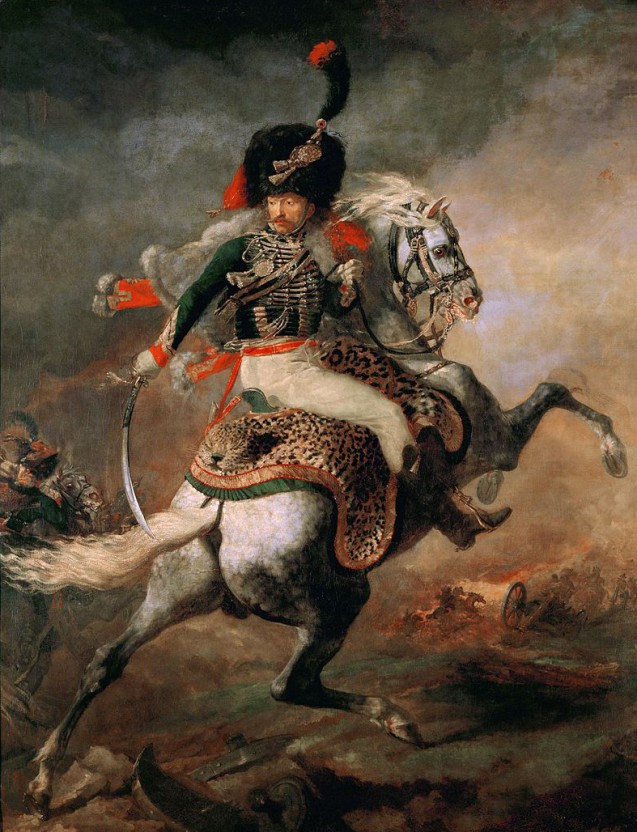It was at the Salon of 1812 that Théodore Géricault, a young painter fascinated by the spectacle of his time, exhibited this his first masterful painting. Géricault’s inspiration for the work came from the simple street scene of a cart horse bolting, but he transformed it into a monumental equestrian portrait of Alexandre Dieudonné, a friend of his who was an officer in the Garde Impériale. Here, in the thick of the battle, the officer on his violently rearing horse turns in his saddle to give the signal to charge. Presented bearing the title Portrait équestre de M.D…, lieutenant des Gardes de l’Empereur, the painting is however more than just the portrait of an individual. It was done using the large format which at the time was reserved for ‘History Painting’. Here, man has been elevated to the status of modern hero.
Completed in a few weeks, this canvas is a shining example of the swagger of the Napoleonic epic. There is power in the movement, warmth in the colours, there is chiaroscuro, there are broad and bold brush strokes which communicate the vibrant quality of the sketch, revealing the intoxication of war and the bravado of the fighter. And yet the work not only symbolises military conquest but also military decline. Behind the blaze of victory there is impending tragedy. The horseman’s meditation in the heart of the action is disturbing and a sign of disquiet. «He is turning towards us», said Michelet, «Is this an adieu? He knows that he will not be coming back. This time he is going to his death». Géricault painted this work at the moment when the Grande Armée was heading for Moscow. A few months later the disaster was complete and Lieutenant Dieudonné (aged 34) had disappeared in the Russian snow.
In the Salon of 1814, Géricault exhibited a companion piece to his first masterpiece. Le cuirassier blessé quittant le feu (The wounded Cuirassier leaving the front line) is a powerful image of defeat. Two paintings, possessing neither allegory nor idealisation, offer a remarkable telescoped view of the triumph and fall of the Empire.
Karine Huguenaud (P.H.)
November 2001


